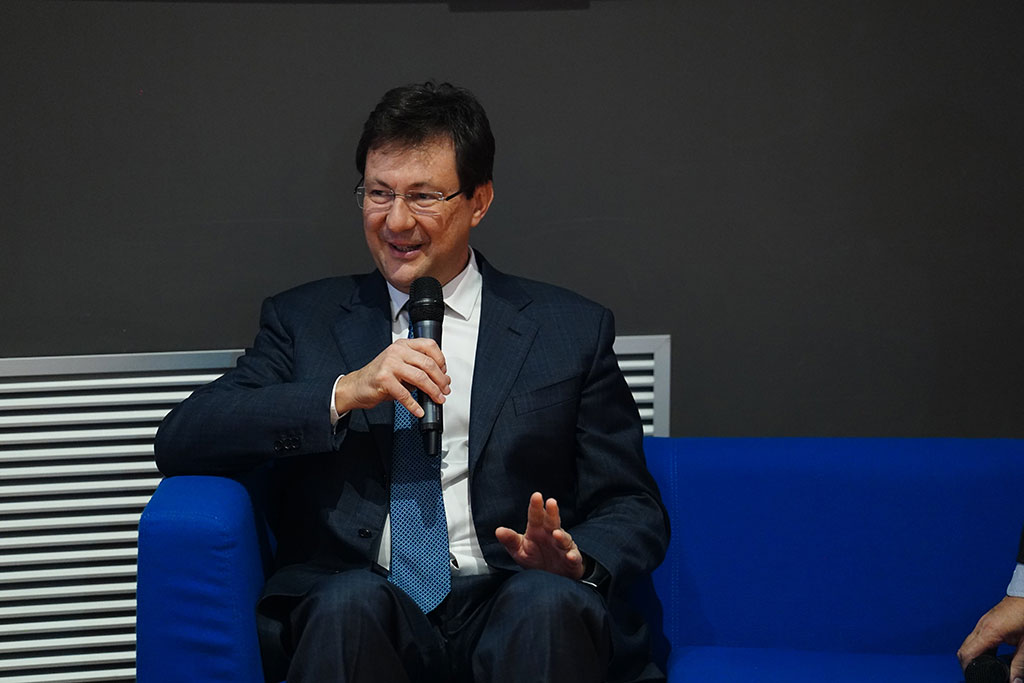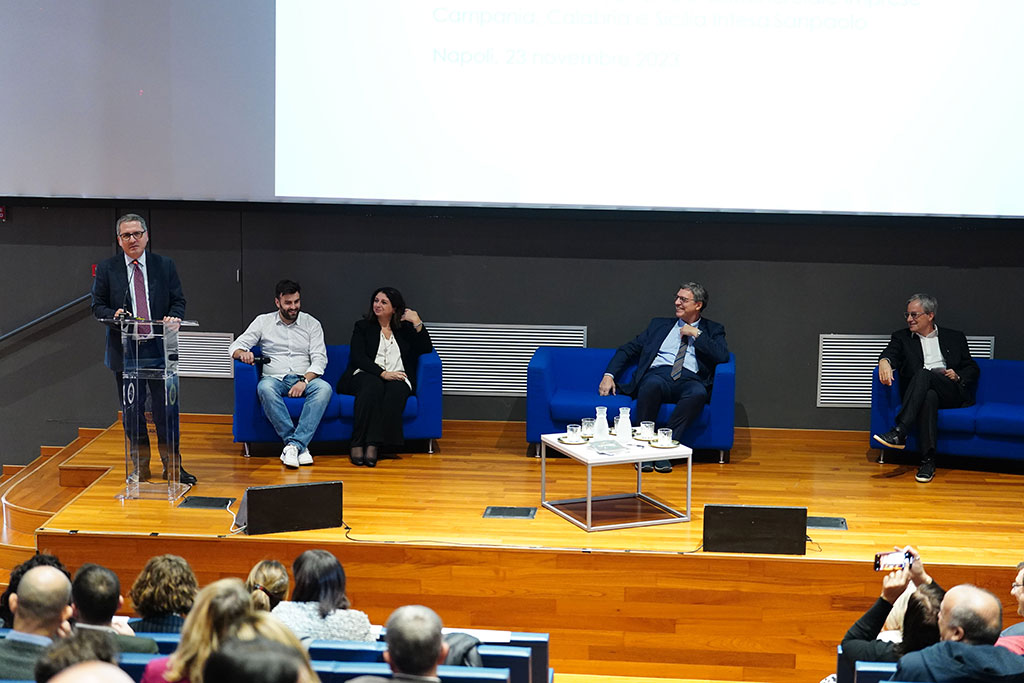Bioplastics: what they are and how much they are "worth" for the circular economy
Bioplastics are produced from renewable sources and can reduce the use of traditional plastics with advantages for the economy and the environment. The market is constantly growing but, as highlighted in the Bioplastics X-Plore report officially presented in Naples, they still face several challenges
To address climate challenges by focusing on environmental sustainability, the EU is promoting policies to protect human health and the environment as part of the transition to the circular economy, and has identified in bioplastics a solution to drastically reduce the use of traditional plastics of fossil origin and the chemicals used to produce them.
The different types of bioplastics represent the 1% of the global production capacity, or a volume of more than 2 million tons per year. Capacity that according to estimates will grow to 1.7% by 2028, with the bioplastics market worth $35.4 billion versus $19.7 billion in 2022. Asia holds almost half of the market share (led by China) followed by Europe (25%).


What bioplastics are and how they are produced: differences with traditional plastics
But what exactly are bioplastics and how do they differ from traditional bioplastics? Despite having a relatively short history, thanks to its lightness, versatility and mechanical properties, plastic has rapidly established itself in many sectors in the second half of the 18th century.
Bioplastics, on the other hand, are more recent and production exploits different renewable sources instead of fossil ones. However, the use of renewable sources for production - mainly derived from by-products and waste - is a necessary but not sufficient condition to define them correctly.
In fact, there are various types of bioplastics: bio-based ones obtained through the use of biological resources in production, biodegradable ones and some that have both characteristics. Therefore, not all bioplastics are produced with organic raw materials, and sometimes they are neither biodegradable nor compostable.
Turning to the biological component on which they rely, there are three different generations of bioplastics. First-generation crops are grown using crops (including corn, rice and vegetable oils); second generation are produced with biomass and forestry (for example wood and agricultural waste); the third generation is finally the most sustainable because it is obtained from algae.
In addition to the materials from which they are produced, bioplastics differ from traditional plastics "end-of-life". The former can be recycled together with organic waste or composted with proper circular waste management; the latter are recovered through separate collection and disposal has negative effects on the environment.


Definition of bioplastics in European circular policies
In European circular policies, one fundamental aspect is the biodegradability of bioplastics or the possibility of transforming them in humus, water and carbon dioxide thanks to the activity of microorganisms present in nature.
To identify in a timely manner those biodegradable and compostable as consistent with the principles of the circular economy and bioeconomy, Europe has set standards for organic recycling and biodegradation:
- Biodegradability equal to 90% in environments "rich" of carbon dioxide within six months;
- No negative effects in composting;
- Low concentration of heavy metals used as additives;
- Chemical-physical parameters not to be exceeded including nitrogen, magnesium and phosphorus concentrations.
In addition, it is crucial in a circular way that bioplastics completely degrade to CO2 and water in industrial composts, soil and water, without releasing toxic by-products
Circular economy and bioplastics: the challenges to be faced
Bioplastics therefore face several challenges related to environmental sustainability to fully enter into the transition to the circular economy, in which any waste through recycling is reintroduced into the production cycle.
The risk of contamination with traditional plastics through separate collection can hinder the full circularity of bioplastics, while the lengthening of the life cycle of products affects all goods, including those made with bioplastics that currently do not have high durability. Moreover, from an economic point of view , bioplastics have higher production costs than traditional ones in the face of lower mechanical properties.
Although there are obvious critical issues, bioplastics are already widely used as alternatives to traditional plastic in different fields given the transformative power of eco-compatible industrial processes. For example, they are establishing themselves in the place of traditional plastic for packaging (half of global demand but still small in food packaging), in the production of consumer goods and textiles as well as agriculture, transport and construction.
As highlighted in the Bioplastics X-Plore report realized by the Trend Analysis office of Intesa Sanpaolo Innovation Center with the scientific contribution of Materias and the collaboration of John Davies of Frost&Sullivan, Italy is a leader in Europe in the management of the "end of life" bioplastics through mechanical recycling.
Nevertheless, the study highlights how decomposition and composting of bioplastics may have negative impacts on the environment. This happens because the microorganisms used release CO2, H20 and other compounds including methane, as well as any toxic substances present in the product additives.
The presentation of the Bioplastics X-Plore report during the event "Bioplastics: Scenario and future trends"
To talk about sustainable and advanced materials as catalysts of innovation and competitiveness, as well as the role that bioplastics can have in the circular transition, the technological campus of Federico II University in San Giovanni Teduccio (Naples) On November 23rd hosted the event "Bioplastics: Scenario and future trends".
A moment of comparison on new business opportunities between current situation and future trends also focused on the report Bioplastics X-Plore - officially presented on the occasion -, attended by representatives of institutions, of academia and research, business and the financial sector.
The event, introduced and moderated by the Head of Communication of Intesa Sanpaolo Innovation Center Filippo Vecchio, after the institutional greetings of Matteo Lorito (Rector of the University) and the director of the Advanced Meteorological and Technological Services Center of Federico II, Domenico Accardo, focused on innovation and research for a sustainable future with two thematic panels.
Luigi Ruggerone (Research and Development Director of Intesa Sanpaolo Innovation Center), Luigi Nicolais (President of Materias) and Salvatore Iannace (Director of the Istituto Scienze e Tecnologie Chimiche of the CNR) focused on innovation and research in their respective interventions, then taking stock of the challenges to be overcome to link academic research with industrial applications of bio-based and biodegradable plastics.
In the second panel, Intesa Sanpaolo’s Commercial Director of Enterprises Alessandro Lenoci, Andrea Lazzeri (Professor of Materials Science and Technology at the University of Pisa), Tiziana Milizia (Director of Bioplastic Development at Novamont SpA), Emanuele Bertoli (CEO Berbrand) and Giovanni Conti (CMO and co-founder of Relicta) discussed production processes and business opportunities for sustainable innovation.
Valeria Fascione - Councillor for Research, Innovation and Startup of the Campania Region - closed the event drawing conclusions. Bioplastics represent a possible solution (not the only one) to combat climate change and project ourselves towards a circular and sustainable future, despite challenges and obstacles still to be overcome.
Look at the gallery




